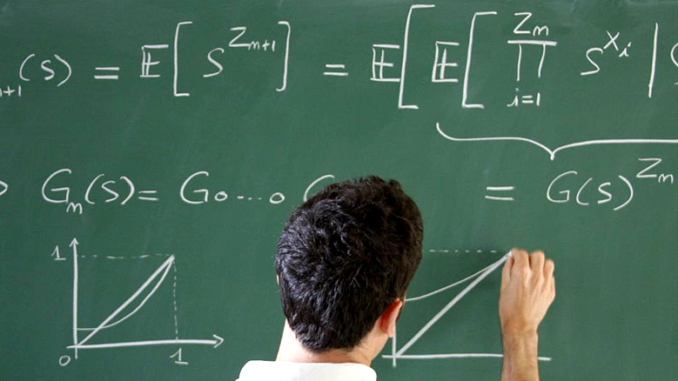
The fading days of summer are giving way to the first days of the school year. New school years bring the inevitable complaints from schoolkids of “But why do I have to learn this math? I’m not going to be a mathematician. I’m never going to use it!” As we help our kids with their homework and struggle with algebra, trigonometry, common core, we may be tempted to agree with them. However, a quick glance through the news reminds me of why math literacy is important.
On August 28th, Puerto Rico officially changed the death toll from Hurricane Maria from 64 to 2,975. This number was adjusted to include people who died, not just during the original storm, but those who suffered due to lack of medical care and resources in the aftermath. They arrived at these numbers by studying census information and comparing it to non-storm death rates, as well as factoring in post-storm migration. Reporting errors have also been factored in.
New Scientist reports that the number of excess deaths in the months afterwards were 1,139, based directly on the numbers of deaths above the average, as per a study by the University of Texas, San Antonio.
The University of Puerto Rico–Mayaguez puts their number around 822.
Yet an often-cited study published in the New England Journal of Medicine puts the number at 4,645, a much more dramatic number. Citing that number is problematic without looking at the actual math. Where did they come up with that total from? According to the study, they surveyed 3,299 households then extrapolated the numbers from there. Their data gave them a range between 793 and 8,498, with 4,645 falling in the middle. They did adjust their numbers to include single-person, non-reporting households, which raised the range from 1,506 to 9,889. That study should illustrate how important it is to use actual records when calculating a statistic as important as fatalities.
It’s not just Puerto Rico that is the subject of questionable math. The U.S. Department of Education released its 2015-2016 Civil Rights Data Collection report on School Climate and Safety in April of this year. In it, they cite the number of school shootings at 235 for that school year. It’s a shocking number, but it’s also a problematic number.
Everytown has the number at 31 for August 2015 through 2016. That also includes shootings and unintentional discharge of weapon on or near a school.
The Washington Post has six listed for the 2015 calendar year, and 13 for 2016.
Where does such a huge discrepancy come from? NPR, with the help of Child Trends, looked into it. The original data was compiled by self-reporting by US public schools. Of the 235 original number, 161 of the districts questioned stated that no gun incident occurred. 4 were miscategorized. 11 were confirmed. 59 could neither be confirmed not disconfirmed. So according to their study of the data cited by the US Department of Education, the real number lies somewhere between 11 and 70.
According to Liz Hill, a spokesperson for the Department of Education, they will publish an errata but not republish the original document.
The Office for Civil Rights responded to NPR’s requests with the following statement:
“The CRDC accepts correction requests for up to one year from the moment the submission period opens. For the 2015-16 collection, the corrections period closed on June 30, 2018, and for this reason your data correction request cannot be accepted. However, a data note will be included on the data file to ensure users are aware of the errors you are reporting.”
NPR
Why is this important? 53 new school safety measures have been signed into law, spending millions on ways to prevent this “common” occurrence. If we are to base our school budgets on these numbers, it is extremely important to base these on actual data. When many of our schools are struggling to cover the basics, we need to do a realistic risk assessment on whether or not thouseands of dollars worth of metal detectors is a wise use of funds.
I fully believe a lot of this misrepresentation is due to mistakes rather than a conscious effort to deceive. But that supports my original point that, yes, even if you don’t plan on going into a math-based career, it’s important to understand numbers and how they work. In addition, the more we, the populace, know about math, the more we can recognize false data when it occurs. If we can recognize it, we can then choose what policy and politicians to support accordingly.
Now go out there and hug a math teacher!
